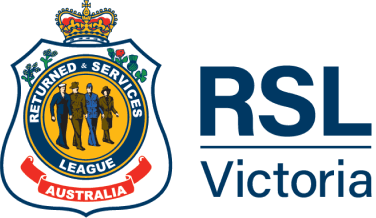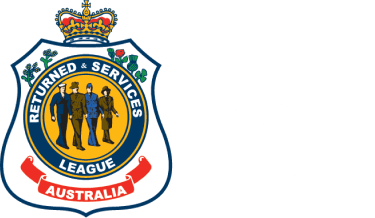25 April - Lest We Forget
The date of the landing at ANZAC Cove on the Dardanelles Peninsula, 25 April, was chosen to be the day that would become our National Day of Commemoration.
Australian and New Zealand troops landed on 25 April 1915 where they, along with other Commonwealth Forces, held ground against almost impossible odds for the next eight months, against a Turkish force determined to defend to the death their homeland.
The British action planned to secure the heights overlooking the forts guarding the narrow straits at the entrance to the Sea of Marmora. The purpose was to silence them and allow the French and British Navy to proceed to Constantinople (now Istanbul) and by a show of force convince the Turkish Government to capitulate and to come to the side of the Allies.
The plans did not bear fruit and what ensued was a tremendous series of battles by both sides over the next eight months. Both sides suffered horrendous casualties amongst the many ravines and gullies of that rugged battleground on which the ANZAC tradition was formed and that has become the benchmark for standards of courage, mateship and determination that has set an example for all Australians to follow.
History of the word "ANZAC"
ANZAC, originally an acronym for the Australian and New Zealand Army Corps, was used by the clerks of General Birdwood’s staff at his headquarters in Shepheard’s Hotel in Cairo, Egypt.
The word ANZAC was approved by General Birdwood as the code for the Corps when the word was proposed by a Major CM Wagstaff. It is thought the suggestion came from a Lieutenant AT White of the Royal Army Service Corps. It is recorded in the official history that “it was some time before the code word came into general use, and at the Landing (on 25 April 1915) many men in the divisions had not heard of it”. After the landing, General Birdwood gained permission to use the name for the area occupied by the Australian and New Zealand Forces.
History of the Dawn Service
The Dawn Service on ANZAC Day has become a solemn Australian and New Zealand tradition. Australians from all walks of life participate in Dawn Services all over the globe. The Australian Defence Force, wherever possible, conducts Dawn Services even in operational areas.
The service is taken for granted as part of the Australian and New Zealand Army Corps ethos and few wonder how it all started. Its story, as it were, is buried in a small cemetery carved out of the bush some kilometres outside the northern Queensland township of Herberton.
Almost paradoxically, one grave stands out by its simplicity. It is covered by a protective white-washed concrete slab, with plain cement cross at its top end. No epitaph recalls even the name of the deceased. The inscription on the cross is a mere two words ‘A Priest’.
No person would identify the grave as that of a dedicated clergyman who created the Dawn Service, without the simple marker placed next to the grave only in recent times. It reads:
‘Adjacent to, and on the right of this marker, lies the grave of the late Reverend Arthur Ernest White, a Church of England clergyman and padre, 44th Battalion, First Australian Imperial Force. On 25th April, 1923, at Albany in Western Australia, the Reverend White led a party of friends in what was the first ever observance of a Dawn Service on ANZAC Day, thus establishing a tradition which has endured, Australia- wide ever since’
Reverend White was serving as one of the padres of the earliest ANZACs to leave Australia with the First AIF in November, 1914. The convoy of ships was assembled in Princess Royal Harbour and King George Sound at Albany. Before embarkation, at four in the morning, he conducted a service for all of the men of the battalion. When White returned to Australia in 1919, he was appointed relieving Rector of the St Johns Church in Albany. It was a strange coincidence that the starting point of the AIF convoys should now become his parish.
No doubt it must have been the memory of his first Dawn Service those years earlier and his experiences in the trenches, combined with the awesome cost of lives and injuries, which inspired him to honour, permanently the valiant men (both living and dead) who had joined the fight for the allied cause. ‘Albany” he is quoted to have said, “was the last sight of land these ANZAC troops saw after leaving Australian shores and some of them never returned. We should hold a service (here) at the first light of dawn each ANZAC Day to commemorate them”. That is how on ANZAC Day, 1923 he came to hold the first Commemorative Dawn Service.
As the sun was rising, a man in a small dinghy cast a wreath into King George’s Sound while White, with a band of about 20 men gathered around him on the summit of nearby Mount Clarence, silently watching the wreath floating out to sea. White then quietly recited the words “As the sun rises and goeth down, we will remember them”. All present were deeply moved by this service and news spread throughout the country and the various Returned Service organisations Australia-wide emulated the service.
Eventually, White was transferred from Albany to serve other congregations, the first in South Australia, then Broken Hill where he built a church, then later Forbes. In his retirement from the clergy, he moved to Herberton where he became chaplain to an Anglican convent. Soon after his arrival in Herberton (on 26 September, 1954) White died, to be buried so modestly and anonymously as ‘A Priest’.
White’s memory is honoured by a stained glass window in the All Soul’s Church at Wirrinya, a small farming community near Forbes. Members of the parish have built the church with their own hands and have put up what they refer to as ‘The Dawn Service Window’ as a tribute to White’s service to Australia.

